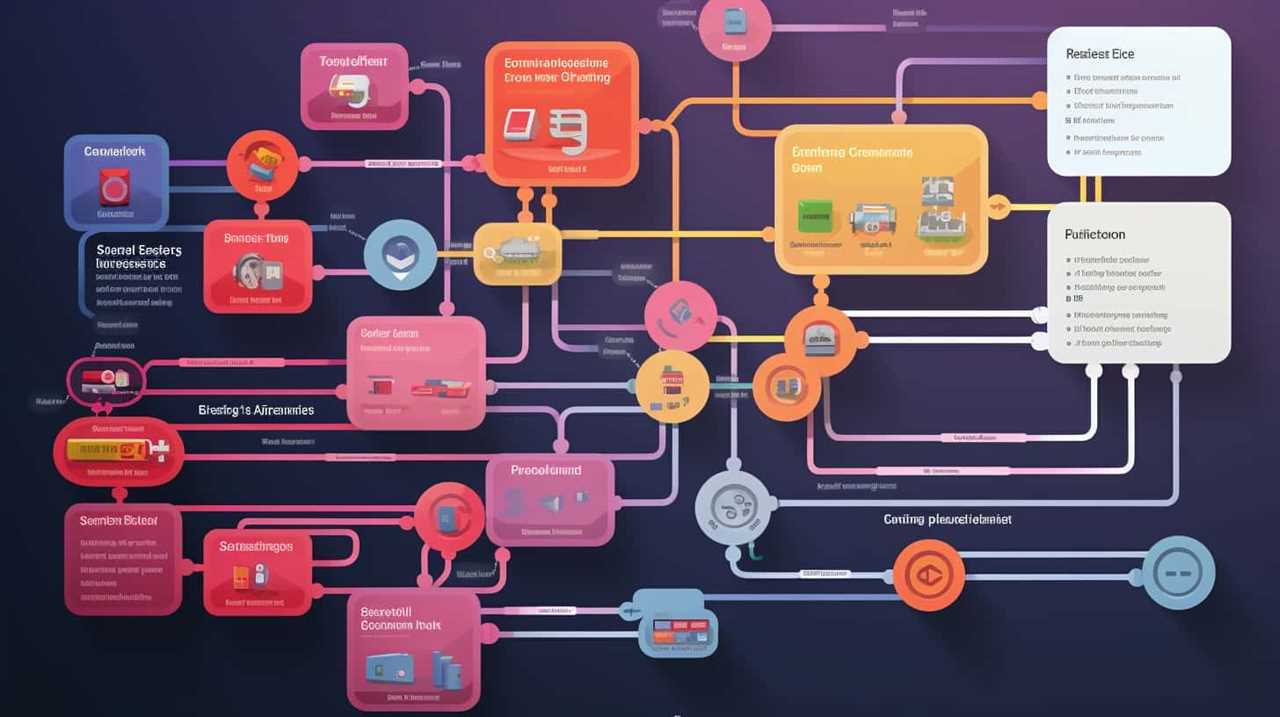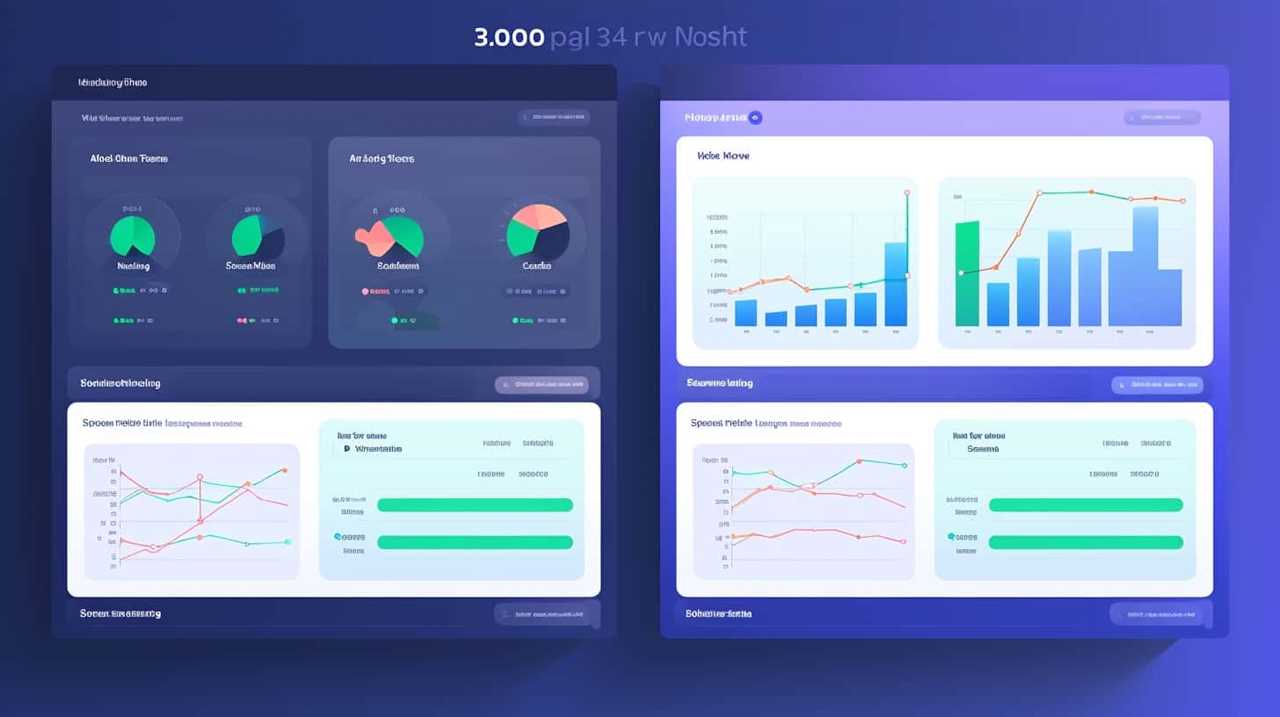Ladies and gentlemen, we invite you to embark on a journey towards liberation as we unveil the top 10 tactics for evaluating high-quality content.
In this article, we will delve into the secrets of understanding your target audience, analyzing relevance, assessing accuracy and credibility, and evaluating writing style and tone.
With our strategic approach and engaging insights, we will empower you to make informed decisions about the content you consume.
Get ready to unlock the keys to content evaluation success!

Key Takeaways
- Understanding the target audience and tailoring content to meet their needs and preferences is crucial for creating resonating content.
- Assessing the topical authority and expertise of the author or source is important for determining the credibility of the content.
- Fact-checking sources, cross-referencing multiple reliable sources, and assessing the reputation and expertise of the author or organization are essential for ensuring accuracy and credibility.
- Evaluating the author’s credibility, writing style, and the overall structure, organization, and visual appeal of the content is important for creating high-quality content.
Understand the Target Audience
To effectively evaluate the quality of content, we begin by understanding the target audience. Audience analysis and target market evaluation are crucial in creating content that resonates with our desired readership.
By understanding their needs, preferences, and demographics, we can tailor our content to meet their expectations and provide value. This involves conducting thorough research, collecting data, and analyzing trends to gain insights into our target market.
We must delve deep into their motivations, pain points, and aspirations to create content that addresses their specific needs. By understanding our audience, we can craft compelling messages, choose the right tone and language, and deliver content that speaks directly to them.
This strategic approach ensures that our content is targeted, engaging, and ultimately liberating for our audience.

Analyze Relevance and Topical Authority
When evaluating the quality of content, it’s crucial to analyze its relevance and topical authority. To do this, we need to determine the topical expertise of the author or source, assessing their knowledge and experience in the subject matter.
Additionally, we should evaluate the content’s relevance to our target audience, ensuring that it addresses their needs and interests.
Lastly, we must consider the overall topical authority of the content, looking at factors such as the source’s reputation, credibility, and the presence of supporting evidence.
Determine Topical Expertise
We frequently analyze relevance and topical authority to determine the topical expertise of content. Evaluating the expertise of a piece of content is crucial in assessing its reliability and trustworthiness.

Here are three key factors we consider when evaluating topical expertise:
- Knowledge and understanding of the topic: We look for evidence that the author has a deep understanding of the subject matter and can provide accurate and comprehensive information.
- Credible sources and references: We examine the sources cited in the content to ensure they’re reputable and authoritative. This demonstrates that the author has conducted thorough research and is drawing upon reliable information.
- Consistency and coherence: We assess whether the content presents a logical and cohesive argument, showing that the author has a clear grasp of the topic and can convey their ideas effectively.
Assess Content Relevance
In evaluating the relevance and topical authority of content, we carefully analyze its alignment with the subject matter and the credibility of its sources. Assessing content relevance is crucial to ensure that the information presented is valuable and meaningful to the audience.
We consider the content quality by examining how well it addresses the specific needs and interests of the target audience. This involves understanding their preferences, concerns, and aspirations. By doing so, we can create content that resonates with them, providing them with the relevant information they seek.
Additionally, we assess the topical authority of the content by evaluating the expertise and credibility of the sources used. This helps to establish the reliability and trustworthiness of the information presented.

Evaluate Topical Authority
To analyze relevance and topical authority, we delve into the alignment of the subject matter and credibility of sources. When evaluating credibility, it’s important to assess the expertise of the authors or organizations providing the information. Here are three key points to consider:
- Authoritative Sources: Look for content that’s supported by reputable sources, such as industry experts, academic institutions, or well-known publications. These sources are more likely to have the necessary expertise and knowledge in the field.
- Consistency: Evaluate the consistency of the information across different sources. Verify if the content aligns with widely accepted facts and theories, as well as other reputable sources.
- Relevance: Consider whether the content is relevant to the topic at hand. Does it provide valuable insights and address the specific needs or interests of the audience?
Assess Accuracy and Credibility
When evaluating the accuracy and credibility of content, it’s crucial to prioritize fact-checking the sources and assessing the expertise of the author. We need to make sure that the information presented is supported by reliable and trustworthy sources.
Fact-Checking Content Sources
We thoroughly assess the accuracy and credibility of content sources through fact-checking. Ensuring that the information we consume is reliable is vital for making informed decisions. When fact-checking content sources, we follow these practices:
- Verify the information presented by cross-referencing multiple reliable sources.
- Assess the reputation and expertise of the author or organization behind the content.
- Look for any potential biases or conflicts of interest that may affect the accuracy of the information.
By fact-checking content sources, we can separate fact from fiction, empowering ourselves with accurate and trustworthy information. This enables us to make well-informed decisions and navigate the vast landscape of content available to us.

Now, let’s delve into the next section, where we’ll explore the importance of evaluating the expertise of the authors behind the content.
Evaluating Author Expertise
Continuing our assessment of quality content, let us now delve into evaluating the expertise of the authors behind the content, ensuring accuracy and credibility. When evaluating author credentials and verifying expertise, it is important to consider several factors. Here is a table that outlines four key aspects to focus on:
| Aspect | What to consider |
|---|---|
| Education | Check the author’s educational background and qualifications. Look for relevant degrees or certifications. |
| Experience | Assess the author’s experience in the field. Look for work history, professional affiliations, and any notable achievements. |
| Reputation | Research the author’s reputation within the industry. Look for reviews, endorsements, or recognition from reputable sources. |
| Publications and citations | Examine the author’s previous publications and citations. Look for peer-reviewed articles or contributions to reputable publications. |
Evaluate Writing Style and Tone
As part of our evaluation process for quality content, we assess the writing style and tone through the use of a compound preposition. Writing style analysis and tone evaluation are crucial in determining the overall effectiveness of a piece of content.
Here are three key factors we consider when evaluating the writing style and tone:

- Clarity: Is the writing clear and easy to understand? Are complex ideas explained in a way that’s accessible to the target audience?
- Engagement: Does the writing capture and hold the reader’s attention? Is it compelling and persuasive, using techniques such as storytelling or rhetorical devices?
- Appropriateness: Does the tone align with the intended purpose and audience of the content? Is it respectful, professional, and in line with the brand’s voice?
Check for Proper Grammar and Spelling
To ensure the quality of content, it’s essential to evaluate the proper grammar and spelling. Spelling and grammar mistakes not only undermine the credibility of the content but also hinder effective communication. When assessing language proficiency levels, it’s crucial to consider the target audience.
For instance, if the content is intended for a general audience, it’s important to use language that’s accessible and easy to understand. On the other hand, if the content is targeted towards a more specialized audience, a higher level of language proficiency may be required.
Examine Content Structure and Organization
In order to comprehensively evaluate quality content, we must carefully examine the structure and organization through a systematic approach. When assessing content readability, we should consider the language used, ensuring it’s clear, concise, and accessible to the intended audience. Coherence is also essential, as the content should flow logically from one point to another, guiding the reader seamlessly through the information.
To achieve this, we can:

- Evaluate the use of headings and subheadings to create a clear hierarchy and aid navigation.
- Check for the presence of transitional words and phrases that connect ideas and enhance coherence.
- Analyze the use of paragraphs and bullet points to break up information and make it more digestible.
By focusing on content readability and coherence, we can ensure that the structure and organization of the content are strong, enabling the reader to engage with the material more effectively. This sets the stage for the subsequent section, where we’ll assess visual appeal and formatting.
In assessing the structure and organization of content, we must pay attention to its readability and coherence. By evaluating the language used, ensuring clarity and accessibility, we allow the intended audience to engage with the material more effectively. Additionally, content coherence is crucial in guiding the reader through the information seamlessly. To achieve these goals, we can examine the use of headings and subheadings, evaluate transitional words and phrases, and analyze the effectiveness of paragraphs and bullet points in breaking up information. By focusing on content readability and coherence, we can ensure that the structure and organization of the content are strong, setting the stage for the subsequent section on assessing visual appeal and formatting.
Assess Visual Appeal and Formatting
For assessing the visual appeal and formatting of content, we prioritize using an article determiner. This enables us to assess readability and evaluate the visual hierarchy of the content.
When evaluating visual appeal, we look for a clean and professional design that’s visually engaging and captures the attention of the audience. We assess the use of colors, fonts, and images to ensure they align with the overall message and branding.

Additionally, we pay attention to the formatting of the content, including headings, subheadings, and bullet points, to ensure it’s well-structured and easy to navigate.
By assessing the visual appeal and formatting, we can create content that’s visually appealing, easily digestible, and enhances the overall user experience.
Now, let’s move on to the next section and consider user experience and navigation.
Consider User Experience and Navigation
When evaluating the quality of content, it’s crucial to consider the user experience and navigation.

Simplifying website navigation and enhancing the user interface are important factors in ensuring that users can easily find and access the information they need.
Simplify Website Navigation
We focus on improving user experience and navigation by simplifying website navigation. When it comes to website design, simplicity is key. By streamlining the navigation process, we make it easier for users to find what they’re looking for, resulting in a more positive user experience.
Here are three ways we achieve this:
- Clear and intuitive menu structure: We organize the website’s content into logical categories, making it easy for users to navigate through different sections and find the information they need.
- Minimalist design: We eliminate unnecessary clutter and distractions, creating a clean and visually appealing interface. This helps users focus on the content and navigate without feeling overwhelmed.
- Responsive design: We ensure that the website is optimized for different devices and screen sizes. This allows users to access the site from any device and have a seamless navigation experience.
Enhance User Interface
To further improve the user experience and navigation, we can enhance the user interface by implementing intuitive design elements and optimizing the overall website functionality. By doing so, we aim to improve aesthetics and optimize performance.

A visually appealing and user-friendly interface can greatly enhance the overall experience for visitors, making it easier for them to find and access the desired content. Intuitive design elements, such as clear navigation menus and prominent call-to-action buttons, can guide users through the website, ensuring a seamless journey.
Additionally, optimizing the website’s functionality, such as reducing load times and implementing responsive design, can further enhance user satisfaction. By prioritizing the user interface and considering the user experience and navigation, we can create a website that not only looks great but also provides a smooth and enjoyable browsing experience.
Measure Engagement and Time on Page
One crucial aspect in assessing the quality of content is gauging user engagement and the amount of time spent on a page. By measuring engagement and analyzing time on page, we can gain valuable insights into how users interact with the content and whether it resonates with them.
Here are three key considerations when evaluating user engagement and time on page:

- Bounce rate: This metric measures the percentage of users who leave a page without engaging or navigating further. A high bounce rate may indicate that the content isn’t engaging or relevant enough to hold the user’s attention.
- Time spent on page: This metric tells us how long users stay on a page before navigating away. A longer average time on page suggests that the content is compelling and holds the user’s interest.
- Scroll depth: This metric measures how far users scroll down a page. A deeper scroll depth indicates that users are actively engaged and interested in exploring the entire content.
Utilize Data and Analytics for Evaluation
Utilizing data and analytics is essential for accurately evaluating the quality of content. In today’s digital world, there’s a vast amount of content available, making it crucial to have a systematic approach to content evaluation.
Data analysis plays a pivotal role in this process as it provides valuable insights into various aspects of content performance. By analyzing data, we can determine which content resonates with our audience, identify areas for improvement, and make data-driven decisions to optimize our content strategy.
Analytics tools enable us to track metrics such as page views, bounce rates, and conversion rates, allowing us to gauge the effectiveness of our content. This data-driven approach empowers us to create high-quality content that engages our audience, drives traffic, and achieves our goals.
Frequently Asked Questions
How Can I Determine the Target Audience for My Content?
To determine the target audience for our content, we start by identifying their demographics and interests. By understanding their needs and preferences, we can create relevant and engaging content that resonates with them and drives liberation.

What Are Some Ways to Assess the Accuracy and Credibility of Content?
Assessing reliability and fact-checking accuracy are crucial when evaluating content. We must ensure that the information we consume is trustworthy and credible. It’s essential to be strategic, engaging, and target an audience that craves liberation.
Are There Any Tips for Evaluating the Writing Style and Tone of Content?
When evaluating content tone, we focus on identifying biases and analyzing language use. It’s important to consider the writer’s intent and how it aligns with our desired liberation.
What Are Some Common Mistakes to Watch Out for in Terms of Grammar and Spelling?
Common grammar mistakes and spelling errors in content are important to watch out for. We strive to provide insights and strategies for evaluating quality content, ensuring it is free from these errors to engage and liberate our audience.
How Can I Measure User Engagement and Time Spent on a Page?
Measuring user engagement and tracking page time is crucial. We can use analytics tools to monitor metrics like bounce rate, time on page, and click-through rates. These insights help us improve content quality and optimize user experience.

Conclusion
After carefully evaluating the top 10 practices for evaluating quality content, we can confidently say that creating engaging and targeted content is essential.
By understanding our target audience and analyzing relevance and credibility, we can ensure that our content resonates with readers.
It’s important to pay attention to the writing style, grammar, and visual appeal to provide a seamless user experience.
By utilizing data and analytics, we can continuously improve and deliver content that captivates and delights our audience.











